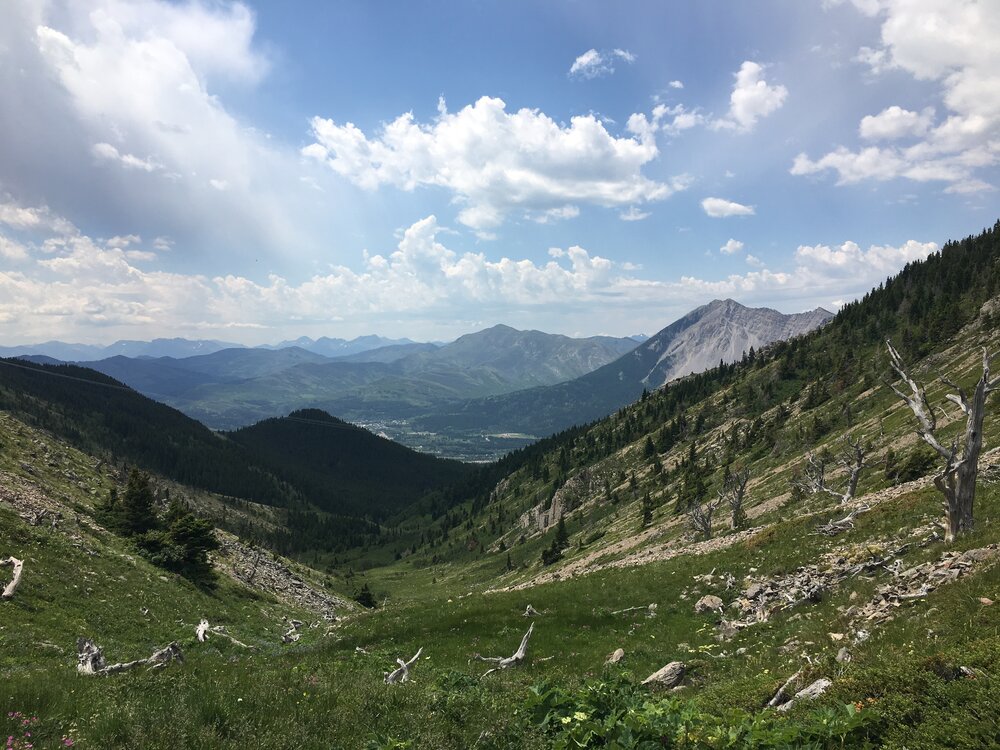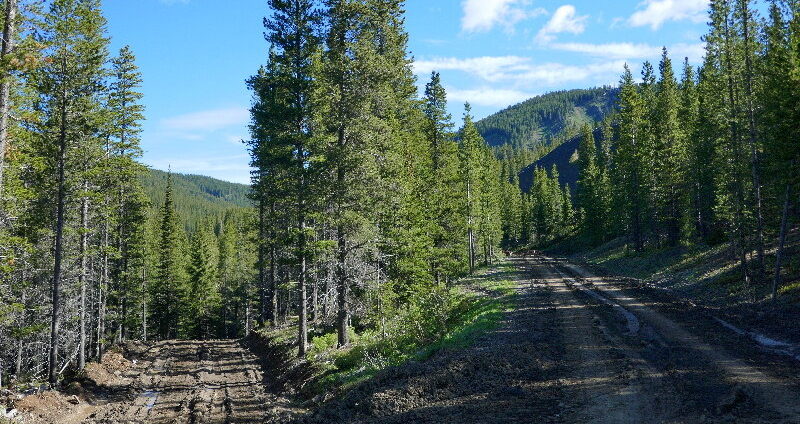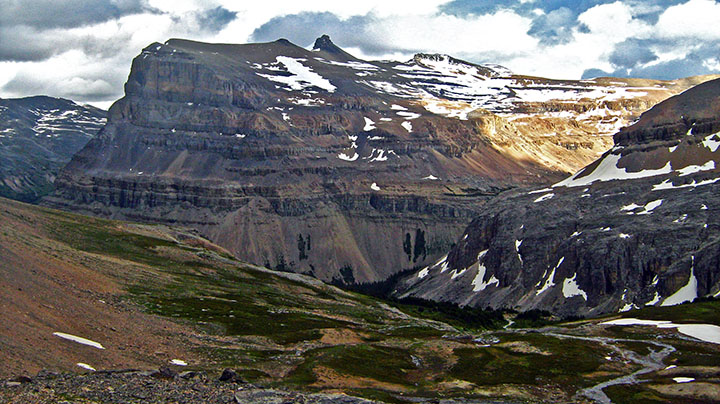Maybe you’ve heard that Alberta is turning to open pit coal mining in the Rocky Mountains. That’s true.
We have some other facts for you about this shocking reversal to a long-standing policy and why it’s a problem for Alberta’s people, waters and wildlife.
What’s the deal with Alberta’s Coal Policy?
For many years, parts of the Foothills and Rocky Mountains were protected from mining in a Coal Development Policy for Alberta, created by premier Peter Lougheed.
That changed on June 1, 2020, when the Government of Alberta rescinded the 1976 Coal Policy.
The Coal Policy aimed to balance environmental protections and economic opportunity and included establishing four coal category regions for the Rocky Mountains and foothills. Coal categories 1, 2, 3, and 4 outlined relative levels of permissiveness for coal exploration and mining, with 1 being the most restrictive and 4 being the most open.
More than 53,000 square kilometres of Alberta’s Eastern Slopes are affected by the rescission of the Coal Policy.
These lands, waters and wildlife — and the millions of people who rely on them — deserve a better future than a resource policy that blasts us 45 years into the past.
Paving paradise to put up a coal pit
Removing the Coal Policy makes it significantly easier to build networks of access roads, undertake exploratory drilling, and operate large-scale open-pit coal mines in the headwaters, relatively intact forests, and popular recreation regions of the Eastern Slopes.
It means sacrificing the security of some of our most important ecological and cultural sites (including 60 provincial parks and recreation areas planned for delisting) on a bet against history — a bet that the next three decades or more will be prosperous for a precarious and notoriously volatile resource that is one of the world’s most significant contributors to greenhouse gas emissions and the climate crisis.

Is Alberta seriously getting new coal mines in 2020?
The risk of open-pit coal mining is neither small nor hypothetical.
While coal for fuel is not as popular as it once was, there is still strong demand for coal used in making steel, or metallurgical coal. But make no mistake: mining both types of coal harms the environment.
There are already a significant number of projects in the proposal phase, including Grassy Mountain, Elan South, Isolation South, Cabin Ridge, Tent Mountain Mine, Chinook, Aries Coal, and the Vista Mine.
Some of these projects are in the final approval stages. Others are currently under exploration, a process that can include building an extensive network of access roads and undertaking intensive drilling before a mine has even been approved. These activities fragment the landscape, cut down endangered five-needle pines, change predator-prey dynamics, and make the land more vulnerable to invasive species and erosion.
The Coal Policy rescission was quietly announced before the May long weekend, and implemented two weeks later.
Zero notice.
Zero consultation.
Well, almost. There is one record of consultation: lobbying from the Coal Association of Canada.
The Government of Alberta has stated that the Coal Policy is no longer needed as it was created before regional planning was finished. The big problem? Regional planning has barely begun.
Only two of the province’s seven regional plans have been finalized, and even one of those, the South Saskatchewan Regional Plan, has yet to complete the sub-regional planning necessary to make the Coal Policy redundant.
Albertans are left with a gaping regulatory hole regarding one of our riskiest industrial activities in perhaps our most important ecological region: the Eastern Slopes headwaters that provide 90% of Alberta’s water for drinking and irrigation.
What does “easing restrictions” mean?
Coal Category 1 allowed no exploration or commercial extraction of coal. Category 2 permitted controlled exploration but nearly barred open-pit mining. Category 3 permitted surface mining so long as a project was found to be in the public interest and environmental mitigation and rehabilitation plans were in place. Category 4 was where coal activity was intended to be concentrated with the lowest environmental risk. Former Coal Categories 2, 3, and 4 are now open to widespread exploration and open-pit surface mining.
When they announced the Coal Policy rescission, the Province stated that Category 1 protections will remain intact, however the policy mechanism for that protection remains unclear. After all, those protections were a product of the now-defunct Coal Policy.

What about our wildlife and species at risk?
Large portions of the former coal category lands overlap with core and secondary grizzly bear habitat, as described in Alberta’s draft grizzly bear recovery plan. That same plan identifies habitat security and connectivity as key strategies for recovery, both of which are threatened by coal projects of this scale.
Roads are bad for grizzly bears, and there are multiple recent scientific studies backing this up, for example a January 2020 paper by Proctor, et. al.: Effects of roads and motorized human access on grizzly bear populations in British Columbia and Alberta, Canada.
When coal projects or large development goes into an area, that means the density and number of roads goes up, affecting the bears who need intact wilderness to thrive.
There is just one watershed in the Livingstone-Porcupine Hills out of 24 where road density is not already an issue. This region is where much of the coal mining activity is proposed, and where mining exploration roads are already being built.
Vulnerable native trout species are also at considerable risk. Coal mine pollution in B.C.’s Elk Valley, immediately west of Crowsnest Pass, has led to selenium levels greater than 100 parts per billion (ppb), compared to 1 ppb upstream of the mines. For comparison, B.C.’s maximum for safe drinking water is 10 ppb.
This level of selenium is a potential health concern for people, and has a very real potential to cause a catastrophic collapse of native trout populations in Alberta’s waterways through reproductive failure and deformity. Selenium pollution from Elk Valley coal mines has created an ongoing international dispute and been linked to the near-disappearance of westslope cutthroat trout from 60 kilometres of the Fording River.
Alberta is defined by mountains
On top of that, this is a weak attempt at diversifying industry and bringing back the prosperity Alberta once had. People don’t travel across the world to see coal mines, or the remains of what used to be mountains. These are trying times, and opening our most fantastic landscapes and wilderness to mining is a desperate move from a short-sighted government.
What you can do today
Let government know how you feel about this change in policy.
Write to your MLA, the provincial Minister of Environment and Parks (AEP.Minister@gov.ab.ca), Minister of Energy (minister.energy@gov.ab.ca), and the federal Minister of Environment and Climate Change (ec.ministre-minister.ec@canada.ca).
It may also help to know Y2Y is urging the provincial government to:
- Reinstate the 1976 Coal Policy until regional planning, including all sub-regional planning, is complete.
- Engage Albertans in a thorough and meaningful public engagement process on the future of the Coal Policy.
- Bringing coal back An interactive long form story by CBC News about coal mining in Alberta. Published July 7, 2020



